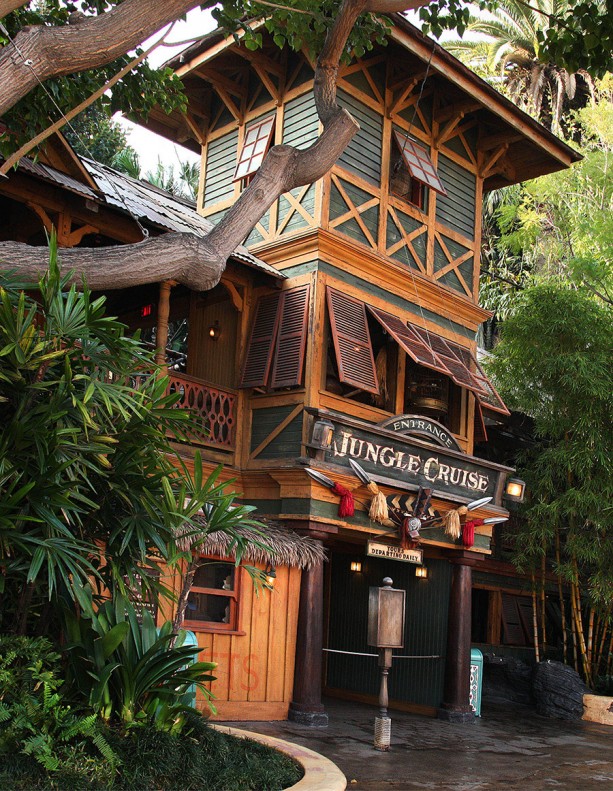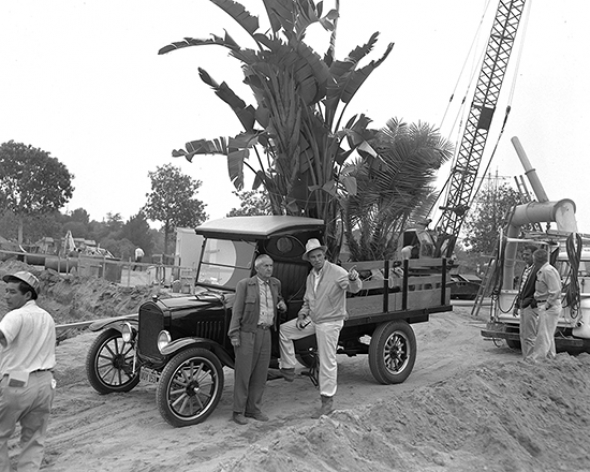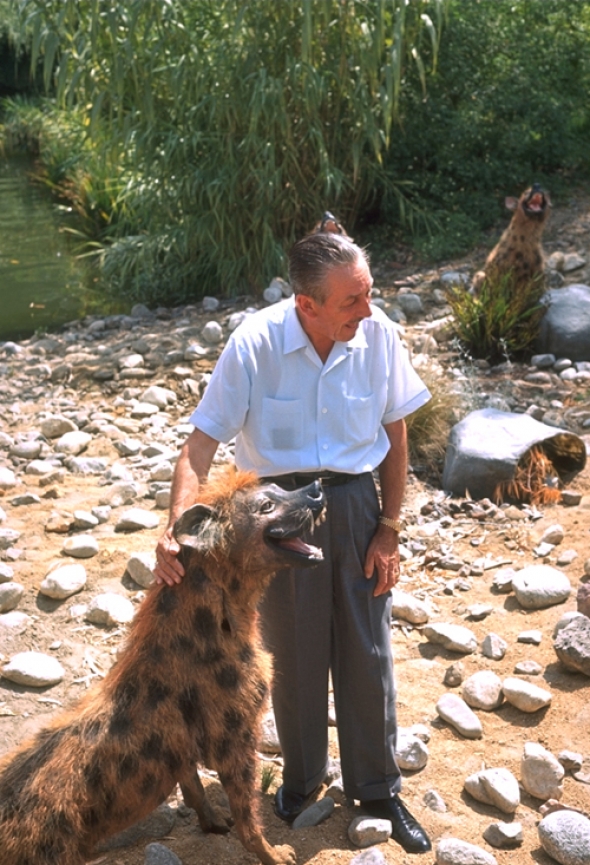“Since we are in an area filled with rare tropical foliage, I'd like to point out some of the plants to you. There's one. There's one...”
One of the worst struggles in creating Jungle Cruise involved the vegetation. There were precarious problems in bringing a jungle to southern California. The primary one involved the timeline. Disneyland broke ground on July 21, 1954, and it opened on July 17th of the following year. That’s 361 days of construction. If you built your own house today, you wouldn’t finish it much quicker than that. Somehow, Walt Disney’s well-organized team populated dozens of previously empty acres of land, ones he’d only owned since 1953, so quickly that they were entertaining the public after 12 months.
What’s the problem? A lot of people bowed to the impressive will of Walt Disney. Mother Nature wasn’t one of them. Growing plants and trees takes time, the one commodity park planners lacked. Uncle Walt drafted another outsider to address the issue. For generations now, Hollywood has offered its fair share of professionals who added “to the stars” at the end of their business card to sound more impressive. In the case of horticulturalist Bill Evans, it was true.
Evans literally traveled the world as a member of the elite Merchant Marine staff. As the son of another plant lover, he accentuated his civic duty by collecting rare seeds to populate his father’s gardens. Evans actually had greater career ambitions, but the Great Depression altered the course of his life, and for the better. He dropped out of Stanford to master the family trade. He convinced his family to offer their exotic plants as picturesque backdrops for the nurseries of the richest people in Los Angeles. His uncanny green thumb serviced many of the movie industry’s elite celebrities and power players.
One of the people he impressed with his deft touch was Walt Disney. Evans populated the landscape for Disney’s Holmby Hills estate, the one that listed for $90 million in 2013. Some planters might have felt intimidated by such a project, but Evans dazzled Disney with his natural ability and vision. When Uncle Walt planned to convert 80 acres of his new property into a theme park, he knew exactly who he wanted to handle all the fauna and flora.
Rise like bread, folks. No loafing around!
Bill Evans, gardener to the stars, suddenly found himself responsible for one of the largest orange groves on the West Coast, only they were supposed to look like exotic continents like Asia and Africa. He had 12 months to fundamentally alter an entire landscape, and while he performed his job marvelously, he still largely failed. When opening day arrived at Disneyland, the forests were notoriously thin.
Due to the lack of the expected tall trees encompassing the line of sight, Jungle Cruise riders in 1965 could see beyond the anticipated forced perspective range. This created multiple issues including one amusing story where future Disney Legend Marty Sklar illegally parked his car near the watery cliffs of the attraction, which was visible to guests just beyond the underdeveloped trees.
As talented as Evans was, he wasn’t a miracle worker. Trees don’t grow tall overnight, which agitated his boss, Walt Disney. One of the unstated bylaws of his company was that no living vegetation would die on his watch. Uncle Walt also produced some of his own. During a visit to investigate a potential ski resort in Colorado, he stumbled upon a set of petrified trees for sale. They fit perfectly for his vision of his new park, which he expected to claim "the best darn jungle this side of Costa Rica." He kept one of the petrified trees for personal use and transferred the other to Disneyland.

There were other forest discoveries along the way. Once, while extremely frustrated over the state of faux jungle, Disney wondered aloud if they couldn’t just increase the size of the tree by adding artificial wood, the equivalent of tree stilts. While people presumed he was joking, the idea had merit. In fact, the addition of enhancements to a living tree proved easier than anyone anticipated. They were able to add artificial size whenever needed in this capacity. Evans became a master of repurposing and resizing thanks to the trials and tribulations of Adventureland in combination with Walt Disney’s whimsies.
One of his most famous tricks was re-integrating the plentiful orange trees in the area. It’s not accidental that Disney was in possession of so many of them, either. You’ve heard the song about tying a yellow ribbon around the old oak tree. Disney employees did almost exactly this. They identified every orange tree that they could save and tied a ribbon around to it to notify the people in the bulldozers that the tree was going to become a part of Disneyland. With such a large supply of orange trees on hand, Evans had the epiphany that if he simply turned them upside down, they would resemble jungle branches with tangled roots.
Evans constantly fought to build the best jungle imaginable. During his world travels, he saw his fair share of forests, and he found most of them boring. Rather than plant a monotonous batch of trees, he decided park visitors would prefer a Hollywood jungle instead. He discarded Amazon realism in favor of what people’s perception of such tropical region should be. Since movies and, recently, television informed these ideas, Evans mined the greater Los Angeles metropolitan area, a boomtown at the time, for lots of palm trees that otherwise might have fallen victim to haphazard bulldozing. In this way, Evans saved a bunch of vegetation while providing the idyllic setting for Adventureland and, especially, Jungle Cruise.



Comments
"Ladies and gentlemen as you exit the boat please watch your step. If you don't, please watch your head. And if you won't watch your head please watch your language."